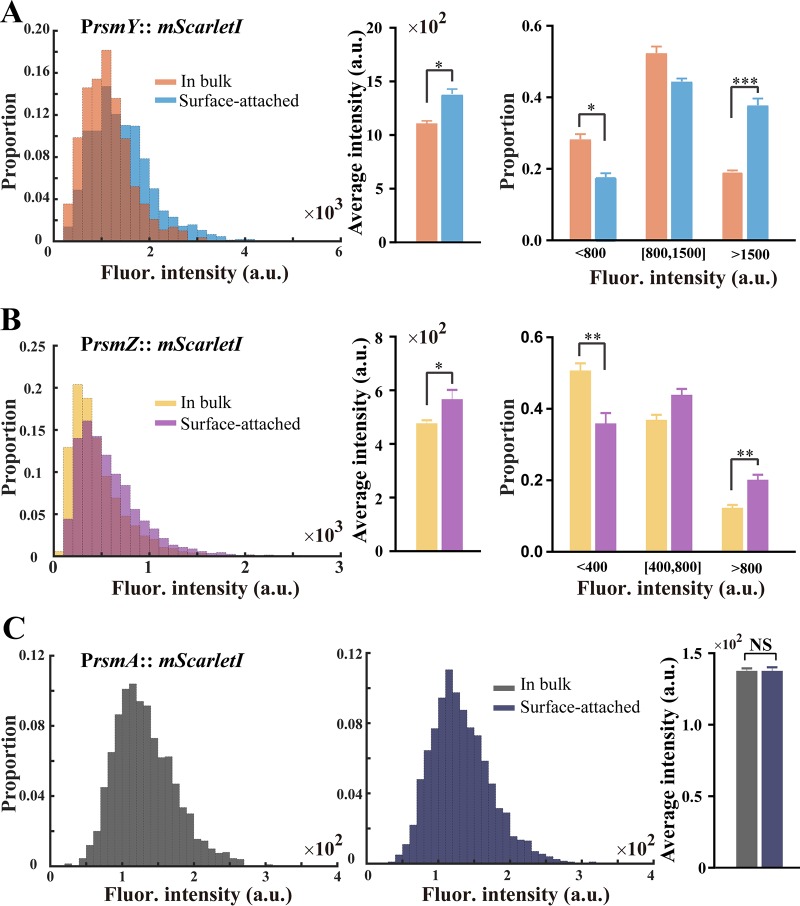FIG 5.
RsmYZ/RsmA regulates the differentially expressed psl operon in P. aeruginoasa. The RsmY, RsmZ, and RsmA expression levels were determined between the populations of bulk and surface-attached cells by measuring the fluorescence of the corresponding reporter. (A) Difference in expression of RsmY between two populations. (B) The difference of RsmZ expression was shown in a similar way. (Left) Distribution of single cell fluorescence for two populations (cell number, >3,000, collected from 3 replicates); (middle) mean fluorescence intensity; (right) analytical classification results. The results show that the proportion of small RNAs (fluorescence intensities smaller than 800 a.u. and 400 a.u. for RsmY and RsmZ, respectively) for bulk populations was approximately two times as high as for surface-attached cells (RsmY, 28% versus 17%, and RsmZ, 50% versus 35%), whereas the surface-attached cells had approximately a 2-fold-higher proportion of small RNAs (fluorescence intensities larger than 1,500 a.u. and 800 a.u. for RsmY and RsmZ, respectively) than bulk populations (RsmY, 37% versus 19%, and RsmZ, 20% versus 12%), which indicates that the cells in bulk had a lower expression of RsmY and RsmZ. (C) The distribution of RsmA levels for bulk (left) and surface-attached (middle) cells and the mean intensity (right) are displayed. Nearly the same distributions were observed and no differences were detected in RsmA expression between the two populations. In panels A, B, and C, error bars represent SDs from three biological replicates. NS, not significant. *, P < 0.05; **, P < 0.01; ***, P < 0.001 (Student's t test).

